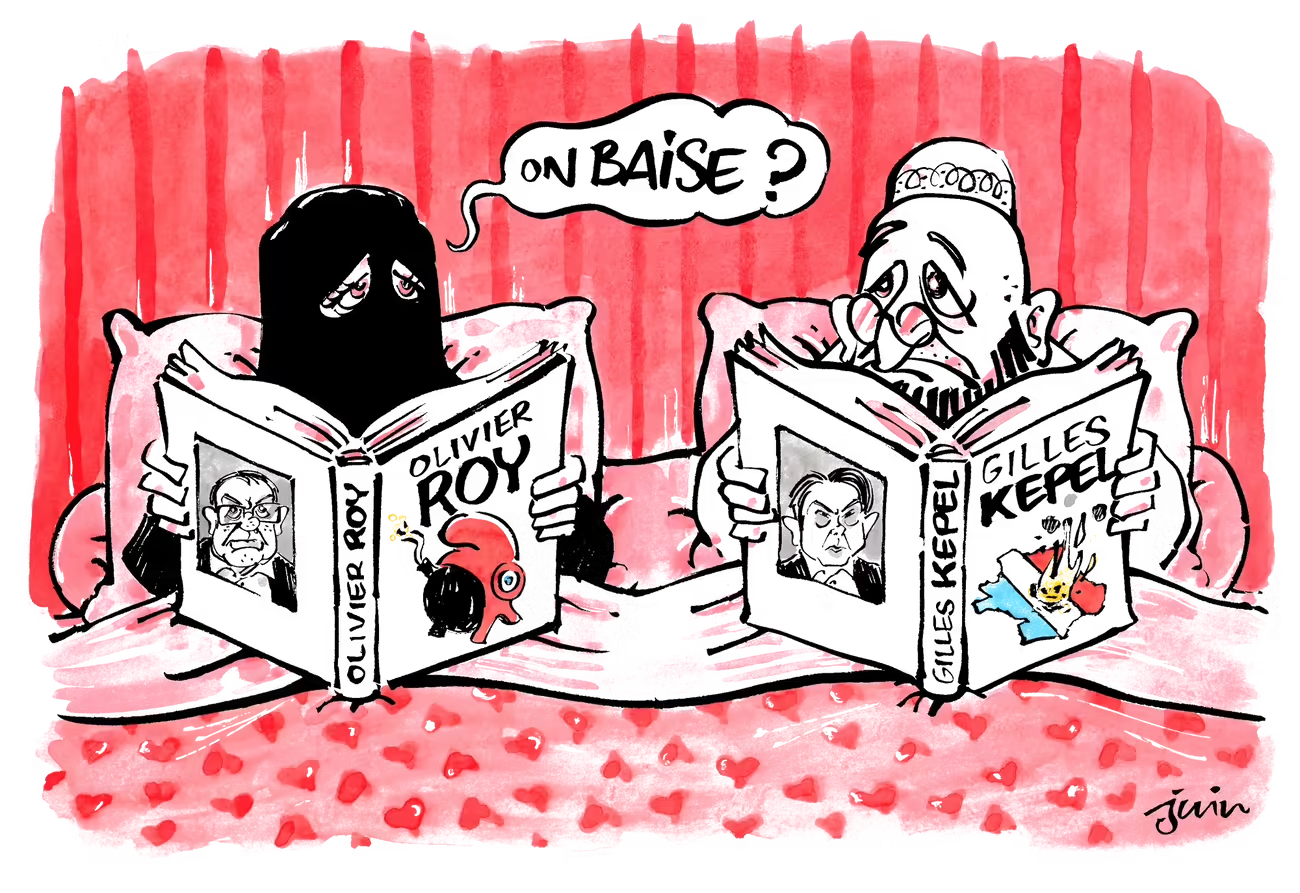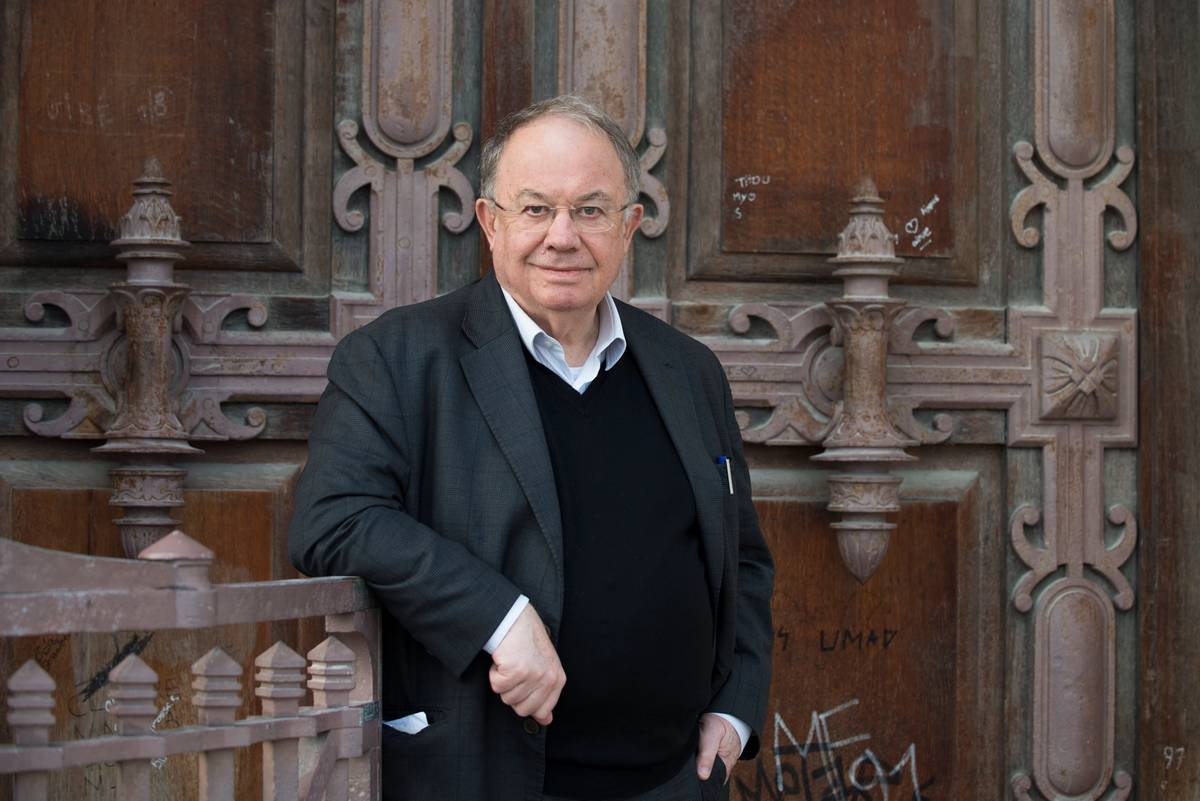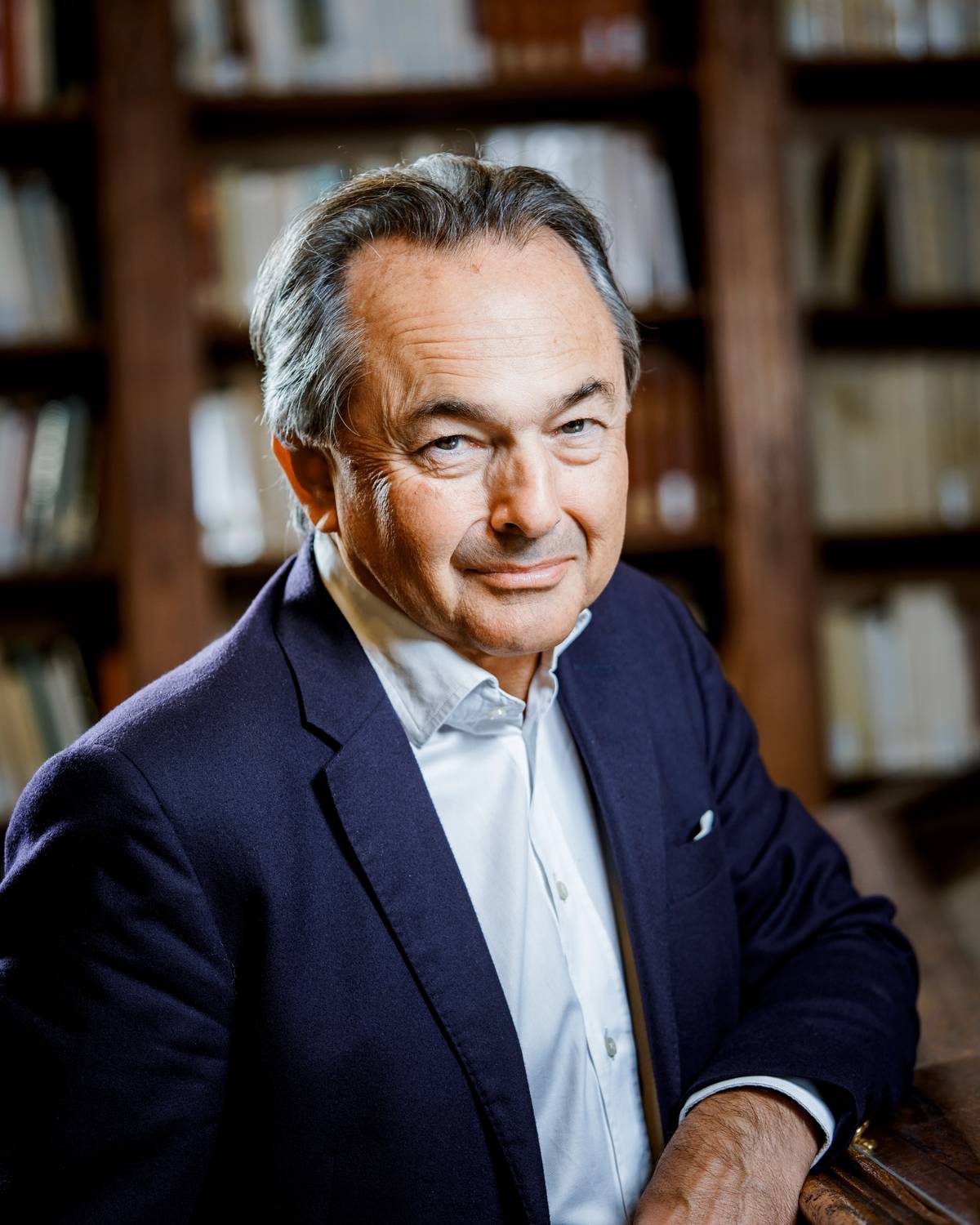 Kołobrzeg 1982 r. Obok Stanisława Mikulskiego, aktora i wiecznego konferansjera festiwalu, koncerty zapowiadała też Irena Falska, spikerka “Dziennika Telewizyjnego”, głównego programu informacyjnego i przede wszystkim propagandowego. (Fot. Stefan Kraszewski/ADM/CAF/PAP, Archiwum)
Kołobrzeg 1982 r. Obok Stanisława Mikulskiego, aktora i wiecznego konferansjera festiwalu, koncerty zapowiadała też Irena Falska, spikerka “Dziennika Telewizyjnego”, głównego programu informacyjnego i przede wszystkim propagandowego. (Fot. Stefan Kraszewski/ADM/CAF/PAP, Archiwum)
Paweł Smoleński
“Kiedy wojsko śpiewa, nikt w kraju nie ziewa, kiedy wojsko nuci, nikogo nie smuci, kiedy wojsko nuci, nikt młotkiem nie rzuci” – śpiewał w 1985 r. Rudolf Poledniok na Festiwalu Piosenki Żołnierskiej w Kołobrzegu.
.
Piosenki festiwalowe popularyzują postępowe tradycje oręża polskiego, ze szczególnym uwzględnieniem walki i zwycięstw Ludowego Wojska Polskiego, uwzględniając tematykę współczesnego wojska, jego trudy i romantykę, nowoczesność i siłę, upowszechniają i ugruntowują ideę braterstwa broni Wojska Polskiego i Armii Radzieckiej z innymi armiami państw socjalistycznych (” Koszalińskie Studia i Materiały”) .
Schrzanić można wszystko
W 1975 r. na Festiwalu Piosenki Polskiej w Opolu Maryla Rodowicz i Daniel Olbrychski zaśpiewali piosenkę “Wrócą chłopcy z wojny”. Muzykę napisała Katarzyna Gärtner, która gdyby urodziła się w Ameryce, byłaby światowej sławy kompozytorką, a słowa ułożył Ernest Bryll, poeta i tekściarz wyborny. Maryla Rodowicz ubrana była tak, jakby dopiero co wróciła z Woodstock, gdzie śpiewaniem pobiłaby na głowę Joan Baez. Olbrychski był w tym kwartecie najsłabszy, ale Andrzejowi Kmicicowi (film “Potop” powstał rok wcześniej) nie pamiętało się potknięć. A dzisiaj nie ma o czym mówić.
.
.
“Chłopcy” to piosenka napisana i wykonana tak, że ciarki idą po plecach. Co bardziej skrupulatni lustratorzy wytkną, że powstała na okoliczność kolejnej rocznicy zwycięstwa ZSRR nad faszyzmem (z armią Berlinga u boku i obecną gdzieś w tle, ale nienadużywaną przez PRL pamięcią o gen. Andersie, Maczku, AK itp.). I nic mnie to nie rusza, bo to piosenka nad piosenki. I kwita.
Niestety, w 1981 r. podczas karnawału “Solidarności” “Chłopców” ściągnięto po raz kolejny na festiwal, tym razem piosenki żołnierskiej, do Kołobrzegu, gdzie wykonał ją chór, który wyglądał jak przebrany w mundury (choć rzeczywiście był to chór żołnierski). Okazało się, że na tym festiwalu można było zamordować ze szczególnym udręczeniem nawet największy przebój. Przypominana przez zawodną pamięć Polska Rzeczpospolita Ludowa jawi się jako kraj nie tak bardzo dokuczliwy, a może nawet z zaletami. Wynika to najczęściej z nostalgii i tęsknoty za młodością. Łatwo zapomnieć, że PRL miała co najmniej jedną cechę dystynktywną i obowiązującą przez wszystkie dekady jej trwania: umiała schrzanić nawet to, co wydawało się nie do schrzanienia. Piosenki również.
Miasto symbol
Festiwal Piosenki Żołnierskiej w Kołobrzegu, który po raz pierwszy odbył się równolegle również w Połczynie-Zdroju w 1967 r., był od początku przedsięwzięciem propagandowym pełną gębą. Tak się działo za Władysława Gomułki, Edwarda Gierka i gen. Wojciecha Jaruzelskiego. Miejsce festiwalu wybrano nieprzypadkowo – w PRL-u Kołobrzeg stanowił symbol walk toczonych na Pomorzu przez 1. Armię Wojska Polskiego oraz miejsca zaślubin powojennej Polski z morzem. Festiwal organizowano w szczycie sezonu urlopowego, gdy do miasta zjeżdżały tysiące wczasowiczów, w amfiteatrze zasiadali ważni goście, z ministrami i sekretarzami na czele. Żołnierska pieśń doprawiona peerelowskim popem płynęła ponad – jak wówczas mówiono – prastarymi ziemiami piastowskimi, które powróciły do macierzy, i miała dowodzić, że publiczność wypełniająca amfiteatr i socjalistyczna armia to jedność nierozerwalna.
Także władze miejskie i wojewódzkie wygrywały festiwal dla siebie. Skoro, jak powiadano, Kołobrzeg jest czwartym polskim portem, umiejscowienie w nim kilkudniowych występów największych krajowych artystów estradowych oznaczało uznanie rangi miasta. Gdyż: “Gdzie zbiegły się razem tradycje Krzywoustego, polskich wojsk pod rozkazami Napoleona, I Armii Wojska Polskiego tak jak w Kołobrzegu? Nim Kołobrzeg zasłynął uzdrowiskiem i ” czwartym portem Rzeczypospolitej”, znany był jako bastion lub twierdza, zdobycie której kosztowało tysiące istnień ludzkich. (…) I chyba w równej mierze logicznie, co i szczęśliwie złożyło się, że właśnie tu odbywa się Festiwal Piosenki Żołnierskiej”.
Wojsku się nie odmawia
W zasadzie wszystkie sprawy związane z festiwalem rozstrzygały Główny Zarząd Polityczny WP i władze partyjne, również te najwyższego szczebla. Układane z wielomiesięcznym wyprzedzeniem listy artystów akceptowali oficerowie polityczni i sekretarze partii, a wśród wybrańców byli piosenkarze i piosenkarki z najbardziej siermiężnej estrady, ale też najprzedniejsze głosy, prawdziwi śpiewacy i popularne zespoły grające muzykę młodzieżową. Gdyby jakiemuś artyście w występie miała przeszkodzić wcześniej zaplanowana trasa koncertowa, w sprawę mieszało się Ministerstwo Kultury, a nawet Komitet Centralny PZPR. Odmowa występu była do pewnego czasu równie rzadka jak cielę z dwiema głowami. Również – jak pisze dr Karolina Bittner w pracy “Piosenka w służbie propagandy. Festiwal Piosenki Żołnierskiej w Kołobrzegu 1968-1989” – występujących w Kołobrzegu nie da się podciągnąć pod jeden strychulec. W latach 60. i 70. odmowa udziału w przedsięwzięciach na wskroś propagandowych nie była zbyt częsta.
Dla jednych deski kołobrzeskiego amfiteatru stawały się przepustką do kariery, recitali i studiów nagraniowych. Inni śpiewali dla świętego spokoju, co zresztą wytykali im recenzenci.
Dr Bittner przywołuje np. przypadek Haliny Frąckowiak, która wystąpiła w Kołobrzegu, licząc na wypuszczenie z więzienia swojego partnera Józefa Szaniawskiego oskarżonego fałszywie o współpracę z CIA (uniewinnionego i zwolnionego z więzienia dopiero w 1989 r.).
 Jedną z gwiazd festiwalu w Kołobrzegu był zespół Kontrasty, który m.in. wykonywał przebój “Myśmy są wojsko”: Piąty raz dojrzały wiśnie i maliny | Czy też nas poznają panny i dziewczyny | Bośmy poszli cicho, a wracamy głośno | Bo nam dziś u ramion karabiny rosną | Witaj, Zosieńko, otwórz okienko | na wschodnią stronę | Daj dla ochłody łyk zimnej wody | – usta spragnione | Witaj nam, Polsko, myśmy są wojsko | biało-czerwone | Wolność za nami idzie polami: | marsz, marsz, marsz. Fot. Stefan Kraszewski/ADM/CAF/PAP, Archiwum
Jedną z gwiazd festiwalu w Kołobrzegu był zespół Kontrasty, który m.in. wykonywał przebój “Myśmy są wojsko”: Piąty raz dojrzały wiśnie i maliny | Czy też nas poznają panny i dziewczyny | Bośmy poszli cicho, a wracamy głośno | Bo nam dziś u ramion karabiny rosną | Witaj, Zosieńko, otwórz okienko | na wschodnią stronę | Daj dla ochłody łyk zimnej wody | – usta spragnione | Witaj nam, Polsko, myśmy są wojsko | biało-czerwone | Wolność za nami idzie polami: | marsz, marsz, marsz. Fot. Stefan Kraszewski/ADM/CAF/PAP, Archiwum
Główną nagrodą były Złote Pierścienie – nawiązanie do pierścienia wrzuconego do Bałtyku przez żołnierzy 1. AWP po zdobyciu Kołobrzegu i w środowisku artystycznym nie cieszyły się specjalnym prestiżem. Przed laty mój przyjaciel, poeta Jarosław Mikołajewski, podówczas student italianistyki, uczył pewnego laureata festiwalu w Kołobrzegu języka Dantego, by ten mógł lepiej wykonywać arie operowe. Podczas jednej z lekcji śpiewak wyznał, że właśnie wygrał Kołobrzeg. – Dali mi w nagrodę pierścień – powiedział – ale nie wiem, co z nim zrobić: na palec za duży, na ch… za mały. Śpiewak zapomniał dodać, że nagrodami za Kołobrzeg bywały również kontrakty płytowe, koncerty w dobrych salach, pieniądze w kopertach i te płacone oficjalnie oraz zagraniczne wyjazdy.
Gdy Polska da nam rozkaz
Pierwszy festiwal kołobrzeski poprowadzili nadzwyczaj popularni wówczas aktorzy – Stanisław Mikulski, który związał się z nim na wiele lat, i Pola Raksa. Siermiężna za Gomułki impreza rozkwitła w dekadzie Gierka i zdaniem wielu propagandystów uchodziła za najlepszy polski festiwal piosenki. Natomiast za Jaruzelskiego raczej dogorywała. W 1981 r., u progu dekady generała, Adam Zwierz, jeden z kołobrzeskich gwiazdorów, śpiewał piosenkę “Gdy Polska da nam rozkaz” odnoszącą się do rzeczywistości czasów karnawału “Solidarności”. Ale na potrzeby kołobrzeskiego amfiteatru tekst zmieniono. Oryginał brzmiał:
Gdy Polska da nam rozkaz,
stanie cały naród nasz
jak zielony młody las,
zgłosimy się do wojska,
żeby wrogom spojrzeć śmiało w twarz.
Natomiast Zwierz śpiewał ze sceny: zgłosimy się do wojska, żeby socjalizmu bronić wraz , choć na zmiany nie zgadzał się autor tekstu.
Festiwal miał chwalić ludowe wojsko oraz socjalizm, nie zauważając niewygodnej historii. W 1967 r. Izrael wygrał wojnę sześciodniową z arabskimi sąsiadami, czego skutkiem była m.in. czystka antysemicka w LWP, ale naturalnie w piosenkach nie ma o tym ani śladu. Tak samo jak nie ma śladu Marca ’68, jeśli nie liczyć wysypu piosenek w stylu patriotyczno-partyzanckim, jakby na zamówienie gen. Mieczysława Moczara.
Kiedy w sierpniu ’68 polscy żołnierze wkroczyli z innymi bratnimi armiami do Czechosłowacji, Kołobrzeg ’69 chwalił internacjonalizm LWP.
W Grudniu ’70, gdy wojsko strzelało do robotników Wybrzeża, Kołobrzeg zachwycał się żołnierzami i socjalizmem. I tak dalej.
Niebezpieczni WiP-owcy
Publiczność też nie reagowała, aż do lat po stanie wojennym, kiedy zaczęła wyrażać opinie nogami i ławy amfiteatru zaświeciły pustkami. Pisze dr Bittner: W latach 80. rosła niechęć społeczeństwa do festiwalu. W lutym 1986 r. SB odnotowało istnienie w Kołobrzegu nielegalnej grupy młodzieżowej, na czele której stał Jacek Borcz. Grupa ta planowała zakłócić przebieg festiwalu ’86 przez użycie środków łzawiących i materiałów wybuchowych na terenie amfiteatru, a także kolportaż ulotek w jednostkach LWP stacjonujących w Kołobrzegu. Miały być to ulotki sygnowane przez ruch “Wolność i Pokój”, dlatego też wszelkie kontakty Borcza z WiP-em były kontrolowane. Wskutek “intensywnego wykorzystania osobowych źródeł informacji stworzono warunki znacznie utrudniające ewentualny kolportaż ulotek w czasie przebiegu FPŻ. Po kilkakrotnej lustracji obiektu i rozmowach z agenturą figurant odstąpił od wcześniejszych zamiarów, uznając ich wykonanie za zbyt ryzykowne i niebezpieczne .
W kolejnym roku według Wojewódzkiego Urzędu Spraw Wewnętrznych w Gdańsku działacze ruchu Wolność i Pokój zamierzali przyjechać do Kołobrzegu, by zakłócić przebieg festiwalu. W rzeczywistości nie odnotowano ani ich pobytu w mieście w okresie trwania imprezy, ani jakichkolwiek działań kołobrzeskich WiP-owców. W 1988 r. członkowie WiP mieli bardziej sprecyzowany plan: kilkudziesięcioosobowa grupa zamierzała wejść na widownię, by swoim strojem i zachowaniem ośmieszyć wykonawców i ich piosenki. 4 lipca 1988 r. do Kołobrzegu przyjechało czterech WiP-owców z Gdańska, m.in. Krzysztof Goliński i Klaudiusz Wesołek, przywożąc 130 plakatów, szablon o nieznanej treści oraz farby. Pozostawiony przez nich plakat w formacie A4 przedstawiał wizerunek głowy piosenkarza z granatem w ustach i napisem “FPŻ Kołobrzeg ’88”. Podczas trzydniowego pobytu w Kołobrzegu WiP-owcy zrobili kilkadziesiąt zdjęć amfiteatru. Ich wizyta była starannie obserwowana, w tym przez dwóch tajnych współpracowników o pseudonimach “Paszka” i “Amadeo”. Wspomniane wyżej afisze zostały przejęte przez SB. W kolejnym roku festiwal skonał.
…a słońce wysoko jak sztukas na niebie
Jarosław Mikołajewski, swoisty koneser kołobrzeskiego rymu, rytmu oraz piosenki żołnierskiej, powiada, że najbardziej utkwił mu w pamięci wers festiwalowego szlagieru, który brzmiał: “(…) a słońce wysoko jak sztukas na niebie”. Niestety, nie udało mi się odszukać ani pełnego tekstu tej piosenki, ani jej autora, a Mikołajewski nie umiał mi w tym pomóc.
Ale przecież wiadomo, że w Kołobrzegu piosenkarze śpiewali przede wszystkim o wojskowym umiłowaniu ojczyzny wyrażającym się zarówno w boju, jak i codziennej pracy:
Marsz bliski sercu
Naprzód iść, naprzód iść po żołniersku
I za Polskę, o Polskę się bić.
Potem wznosić w niej domy do nieba,
w wielkich hutach wytapiać jej stal,
dzień świąteczny jej oddać, gdy trzeba,
i ukochać, ukochać swój kraj!
Albo:
Umiłowanej ojczyzny trzeba było strzec. I dlatego:
Białe ogrody chmur
Pofruną odrzutowce w dobrą i w złą pogodę,
Nie pozwolimy, by ktoś obcy
Wtargnął do tych ogrodów.
Wszyscy wiedzieli, przed kim wojsko ma bronić Polski, choć z reguły w piosenkach nie wymieniano konkretnego wroga:
Nie usnął wróg,
uzbraja pięść,
podnosi wraży łeb.
Ojczyzny strzec –
najprostszy sens!
Na dzisiaj rozkaz i na wiek!
Żołnierzu, dziś
przyjaciół masz,
zbratanych wróg nie zdławi sił.
Tylko pomyśl, pomyśl, Bill
Od czasu do czasu w tekstach piosenek pojawiali się Niemcy, począwszy od wojujących z pierwszymi władcami piastowskimi margrabiów marchii pogranicznych. Tylko raz zaśpiewano w Kołobrzegu o Amerykanach, ale za to w kontekście wojny wietnamskiej:
Czego szukasz, Bill…
Tylko pomyśl, pomyśl, Bill.
Zdejm żelazny hełm,
Palce z broni zdejm,
Póki krew cudzych pól nie przepoi.
Patrz, wietnamski ryż
Purpurowy dziś –
Czego szukasz w nie swojej ojczyźnie? (…)
Tylko pomyśl, pomyśl, Jack. (…)
Kiedy ogniem bomb palisz cudzy dom,
Co cię czeka w ojczyźnie nie twojej? (…)
Tylko pomyśl, pomyśl, Dick. (…)
Zrozum wreszcie sam,
Że twój wróg jest tam,
W twojej własnej, nie cudzej ojczyźnie!
Ale żeby być pewnym sukcesu, polski żołnierz – jak wynikało z piosenek – jest świadomym uczestnikiem bratnich sojuszów (z – jak wówczas mówiono – Związkiem Radzieckim na czele), docenia je i pielęgnuje:
Bratnie armie
Zbrojne ramię narodów,
które bronią swych praw.
My strzeżemy swobody,
to serdeczny nasz pakt. (…)
Bratnie armie
ramię w ramię maszerują,
Bratnie armie
siedem stolic salutują! (…)
Rozumiemy się bez słów
Nie z soli był ani z roli, generał, robotnik z Woli
W Kołobrzegu śpiewano nawet o żeglarzu Leonidzie Telidze, który z wojskiem nie miał nic wspólnego, ale jego samotny wokółziemski rejs świetnie wpisywał się w gierkowską propagandę sukcesu lat 70. Oraz o Mirosławie Hermaszewskim, czyli pierwszym Polaku w kosmosie:
Polski lotnik kosmonauta
Polski lotnik kosmonauta
Jawę zmienia w sny,
Polskich skrzydeł nowa karta
Duma naszych dni.
Żołnierz, lotnik, kosmonauta
Pierwszy Polak dziś.
Po nim już przetartym szlakiem
Inni będą iść.
Krzysztof Cwynar zaś odśpiewał losy gen. Karola Świerczewskiego, za co został nagrodzony przez Zarząd Główny Związku Bojowników o Wolność i Demokrację:
Był kiedyś taki generał jedyny na całym świecie,
co kuli nie wybierał.
Już wiecie który, już wiecie.
Był z nami na obcych lądach nasz
ukochany generał,
kostusze w oczy zaglądał, a nigdy nie umierał.
Nie z soli był ani z roli, jedyny taki na świecie
generał, robotnik z Woli.
Już wiecie który, już wiecie.
W innej piosence pt. “Na połoninach” gen. Świerczewski “szedł szlakiem podziemnej bandy” w sensie walki z antykomunistycznym podziemiem, w tym wypadku z Ukraińską Powstańczą Armią.
W Kołobrzegu piosenkarze śpiewali też o tym, jak ludowe wojsko postrzega ogół społeczeństwa:
Nikt nie ziewa
Kiedy wojsko śpiewa, nikt w kraju nie ziewa,
kiedy wojsko nuci, nikogo nie smuci,
kiedy wojsko nuci, nikt młotkiem nie rzuci.
.
.
Albo:
Ale przyszło wojsko
Pomoc wojska dla ludności
to nie slogan, każdy wie.
O żołnierskiej przydatności
niech przykłady mówią te.
Służba w Ludowym Wojsku Polskim była, jak wiadomo, marzeniem każdego młodego Polaka.
W wojsku nie jest źle
Komputery tego nie wyliczą,
jaką wojsko poi nas słodyczą. (…)
My wiemy, że
w wojsku nie jest źle!
Przyjemności mamy tu co chwila,
to nasz kapral życie nam umila.
Kartofelków w kuchni zapas spory –
jest rozgrywka na długie wieczory. (…)
Weźcie mnie z rezerwy
Weźcie mnie w końcu z tej rezerwy
Ja bardzo proszę, bardzo chcę,
W wojsku ukoję swoje nerwy
Nabiorę werwy itp.
To nic, że kasza i konserwy
Że trudy ćwiczeń dzień i noc
Weźcie mnie wreszcie z tej rezerwy
Chcę mieć swój plecak, mundur, koc
Weźcie mnie w końcu na ćwiczenia
Na jeden miesiąc, dwa lub trzy
Niech tęskni za mną moja dama
I niech wylewa za mną łzy
Wojsko mi wszystko poodmienia,
Schudnę i zrzucę ciężar lat
A kiedy wrócę po ćwiczeniach,
To wypięknieje mi żona i świat.
Tylko w mundurze
Tylko w mundurze panna kocha na śmierć,
tylko w mundurze możesz być zdobywcą serc!
Szanse masz dużo większe niż cywilów stu,
tylko w mundurze znajdziesz pannę swą!
Dobrze byłoby, gdyby wrócił?
W programie pierwszego festiwalu czytamy: Przyjaciółką żołnierzy, arką przymierza między dawnymi a nowymi laty żołnierskich trudów i uciążliwej, niespokojnej wojaczki, określano i określa się po dziś dzień wojskową pieśń i piosenkę. (…) Od dawnej rycerskiej “Bogurodzicy” po późniejsze rapsody i pieśni – idzie ta forma twórczości z wojskiem drogami i bezdrożami, jakże lapidarnie wyrażając sens zmagań i zwycięstw istotę! Nie mam pojęcia, czy autor tych słów wierzył w ich sens.
W Kołobrzegu występowali wszyscy znaczący, ale też podrzędniejsi artyści. Festiwal miał swoje gwiazdy – Reginę Pisarek czy Adama Zwierza. Autorami piosenek byli grafomani, ale także najprzedniejsi tekściarze i kompozytorzy. Melodyjne piosenki mieszały się ze szmirą, teksty udane z rymowanymi potworkami. Dzisiaj kołobrzeski epizod nie jest przesadnie eksponowany w biografiach twórców i wykonawców. Do nielicznych należał Stanisław Mikulski, który we wspomnieniach pisał, że miło pamięta Kołobrzeg i romans z PRL-owską piosenką żołnierską. Od czasu do czasu na łamach kołobrzeskiej prasy pojawiają się nostalgiczne uwagi, że festiwal to jednak było coś i że dobrze byłoby, gdyby wrócił. Raczej nie ma na to szans. W latach 90. nie udało się reanimować Kołobrzegu, bo na taką ekstrawagancję, również finansową, stać było PRL, a nie III RP. W końcu kraj na dorobku.














